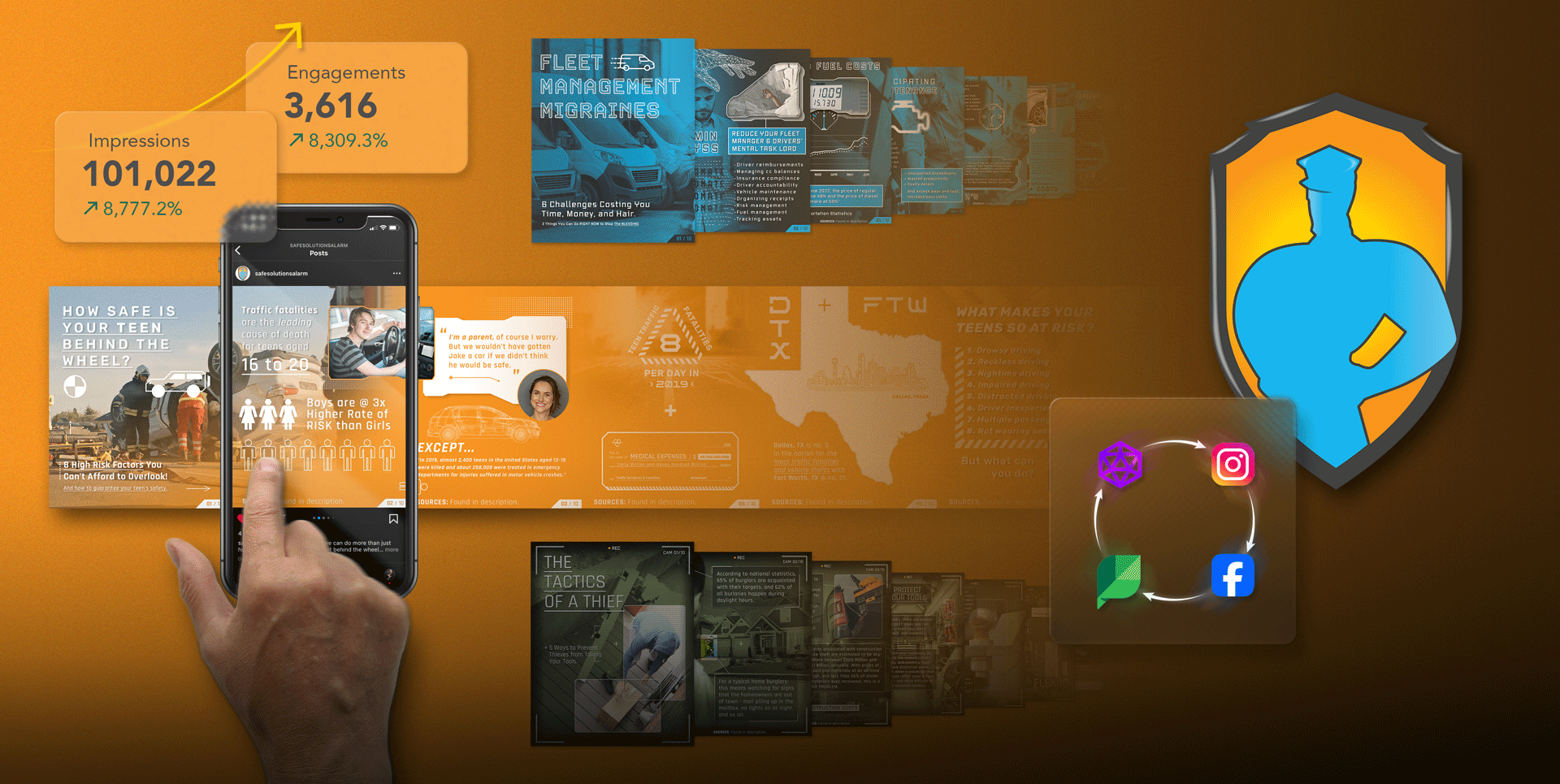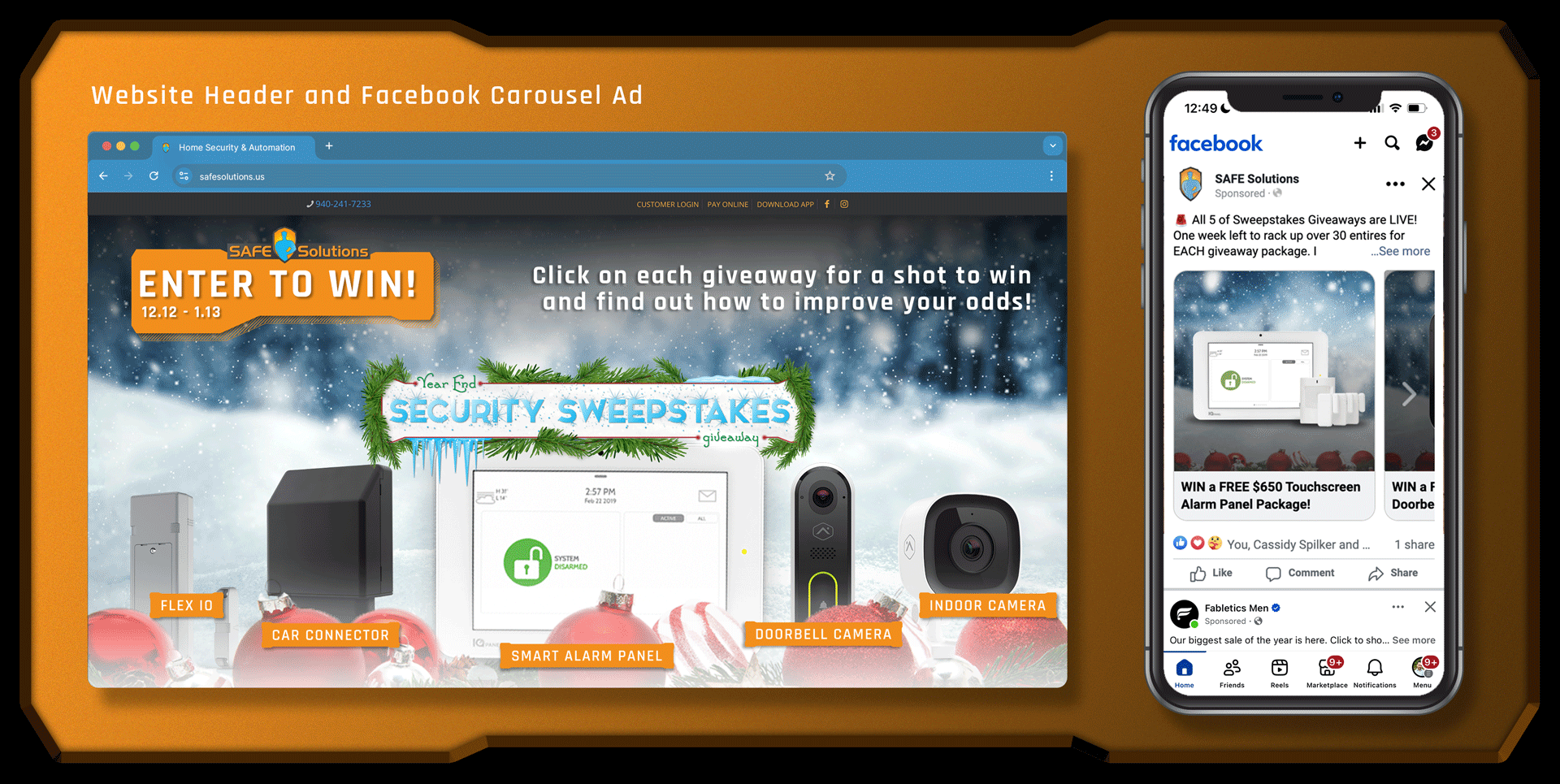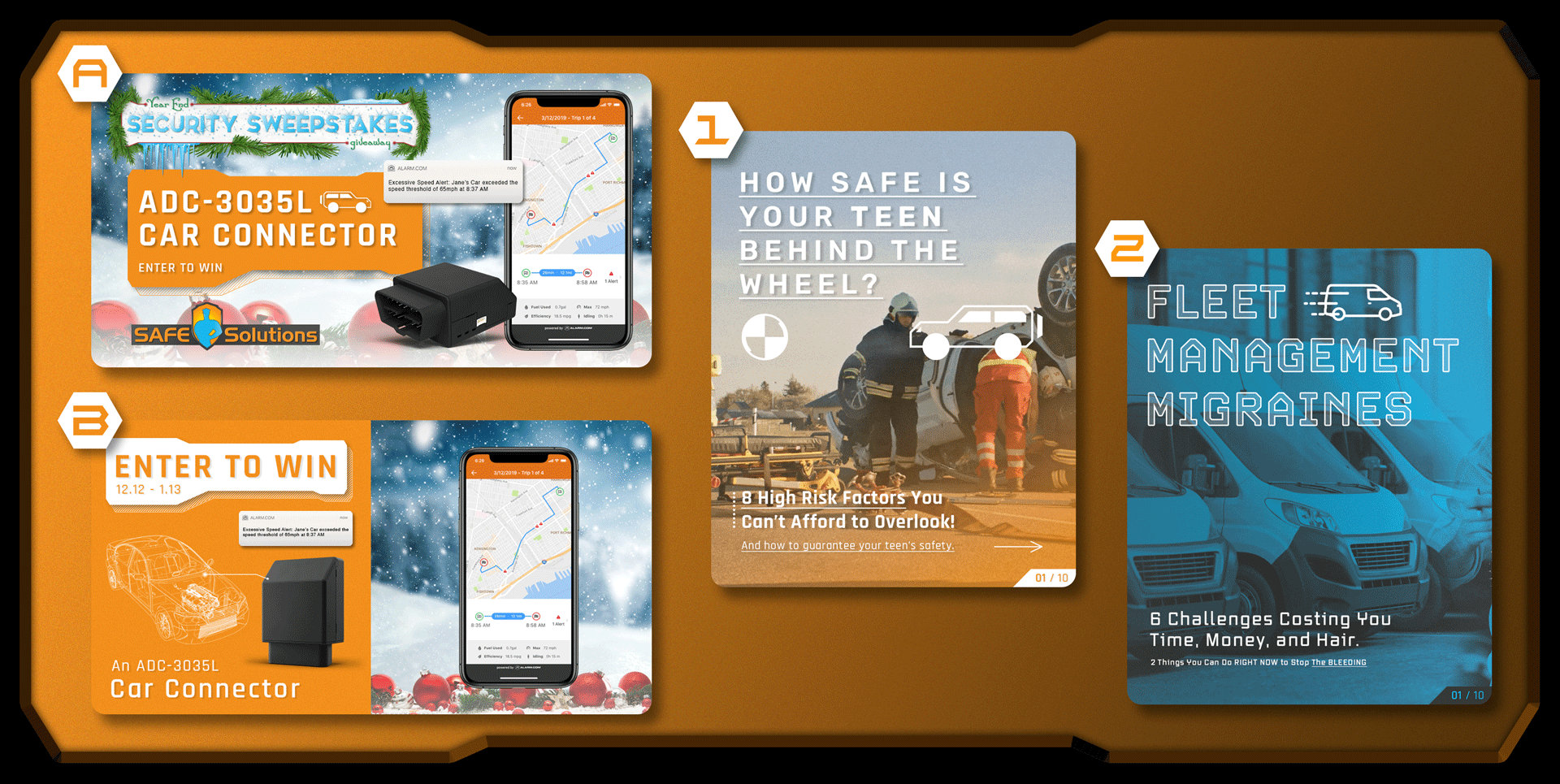
SAFE Solutions | Year-End Security Sweepstakes Giveaway
Lighting Up Leads: A Campaign That Schooled Me in the Mechanics of Marketing
This wasn’t a flawless execution—it was a formative one. A campaign that, more than showcasing mastery, revealed the real cost of fragmented focus and the weight of trying to be clever, comprehensive, and clear all at once.
The Year-End Security Sweepstakes was an ambitious 12-week sprint designed for Safe Solutions, a residential and commercial security company led by Mike Reed. It aimed to grow his customer base and deepen brand awareness by offering five consecutive giveaways of security products—each with increasing value and service utility.
But what unfolded was more than a marketing rollout. It was a full immersion into the chaotic, moving parts of multi-product messaging, funnel mechanics, cross-platform content creation, and conversion analysis. This campaign became less of a showpiece and more of a mirror—revealing assumptions, blind spots, and truths about attention, offer clarity, and the ever-elusive art of turning interest into action.
The Mission at Hand
1. Grow Mike Reed’s Customer Base: Our goal was to attract new customers by building his Alarm.com subscriber list through a sweepstakes strategy—but we miscalculated how clearly and convincingly that call-to-action needed to be embedded.
2. Elevate Brand Visibility: Use engaging content to demonstrate the real-world utility of security products for families, fleet managers, and property owners.
3. Navigate Product Fragmentation: With five distinct products aimed at different types of buyers, our messaging shifted weekly. Instead of reinforcing a central offer, we were constantly re-targeting—fragmenting attention rather than amplifying core value.

A Strategy with Grit, Guts, and a Giveaway
At the center of this campaign was a simple, linear offer: enter to win a security product bundled with three months of free service. We used ViralSweep to manage entries, track attribution, and gamify engagement through bonus entry incentives tied to social media activity.
Each week featured a new product. We created tailored messaging based on the product’s value proposition, not by persona—an oversight that stretched our targeting thin and undermined our ability to build cohesion or remarketing momentum.
Our carousels were dense with insight—infographic-like content that explained features, use cases, and buyer benefits. To extend their reach, we animated them into Reels using voiceovers and motion graphics, transforming static content into shareable video narratives. This was less about production flair and more about giving each post a second life in Instagram’s algorithm-driven feed.

Execution: Content, Campaigns, and Conversion Tactics
Deliverables Included:
• 5 product-specific sweepstakes landing pages
• 8 carousels (10 slides each, infographic-style)
• 14 animated Reels converted from carousel content
• 5 Instagram/Facebook story posts
• 7 email campaigns using Mike’s 1,000-person list
• 22 A/B-tested Meta ads (4 variants per product: 2 images × 2 copy options)
• 1 recap video montage showcasing all product visuals
• Custom sweepstakes logo/header (vertical + horizontal formats)
Our staggered content schedule ensured each week layered strategy on top of execution—content was written, critiqued, revised, and launched in rolling phases. The paid ads budget was $500, used exclusively for Meta ad spend, while creative work was scoped and billed separately.

Results: What We Sparked
Paid Ad Performance (Meta Ads)
• 176,561 impressions = CPM: $2.83
• 1,044 engagements = CPE: $0.48
• 1,289 clicks = CPC: $0.39
Organic Profile Growth (Facebook & Instagram)
• 101,022 impressions (+8,777.2%)
• 3,616 engagements (+8,309.3%)
• 1,138 post link clicks (+22,660%)
• Facebook likes: +850%
• Instagram followers: +100%
• Video views: +36,100%
Email Campaign Metrics (7 Emails)
• Average open rate: ~320
• Conversion rate range: 0.9% – 1.9%
• Total sweepstakes participants: 54
• Overall conversion rate from page views to participants: 3.7%

Lessons Learned: The Curriculum of Clarity
Information ≠ Impact
My carousels were beautifully detailed—but too dense. In trying to educate, I overwhelmed. The abundance of information didn’t drive action the way simple, sharp messaging would have.
Utility ≠ Urgency
I assumed the giveaways would sell themselves. While they were valuable, they came with friction—hardware + service + signup. The lack of a no-strings-attached perception dulled the urgency to act.
No Tribe, No Traction
With five distinct products and no shared persona, our audience changed weekly. That fragmentation diluted continuity and made follow-up harder. In hindsight, I should’ve rallied around one core offer: the Alarm.com subscription.
The CTA Disconnect
We succeeded in reach but fumbled the relay. There wasn’t a strong enough through-line to convert entrants into subscribers, and thus, into customers. We marketed attention, but failed to build a long-term nurture ecosystem.

Takeaways: The Campaign That Taught Me More Than I Taught It
This wasn’t just a marketing campaign—it was a pressure cooker of complexity, content, and conversion logic. It taught me:
• To focus messaging around a singular transformation, not fragmented features.
• To build with remarketing in mind from the start—not retroactively.
• That brand strategy always comes before channel mechanics, no matter how sophisticated your funnel.
For all its imperfections, this project deepened my respect for the nuance of marketing mechanics. It stretched my creative capacity, revealed the limits of assumption, and reaffirmed that effective branding isn’t just about what’s seen—but about what’s felt, understood, and acted upon.
